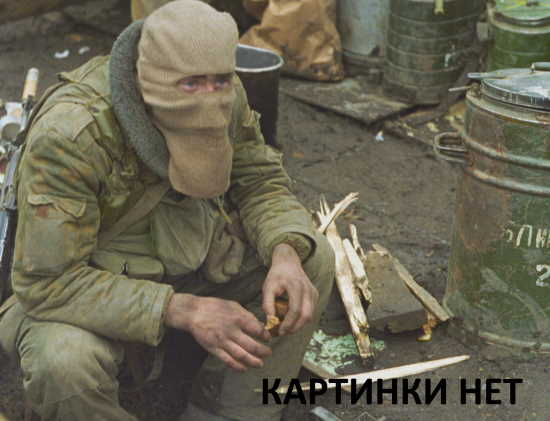|
Why We Fight: The Battle of Russia. Сталинградская битва (СССР-США) 1943 год |
| [Главная] › [Великая отечественная война] › Why We Fight: The Battle of Russia. Сталинградская битва (СССР-США) 1943 год | |
| Рейтинг материала: 5.0 Голосов: 2 |
|
|
Хронология событий в фильме:
Общий вид г. Сталинграда. Улицы города. Завод «Красный Октябрь». Производственные процессы на заводе. Производственные процессы в цехах Сталинградского тракторного завода. Вид реки Дон. Эвакуация колхозов. Наступления советских войск. Атака немецких танков. Горящие деревни. Беженцы. Строительство оборонительных укреплений. Установка зенитных пулемётов. Командующий Сталинградским фронтом генерал-полковник А. И. Ерёменко и член Военного Совета фронта Н. С. Хрущёв. Немецкие самолёты в небе. Бомбардировка г. Сталинграда. Формирование рабочих отрядов. Оборона различных объектов города. Уличные бои. Горящий г. Сталинград. Переправа советских войск через реку Волгу. Действия Волжской флотилии. Высадка десанта. Общий вид Сталинградской ГРЭС (районная тепловая электростанция). Ремонт танков в одном из цехов ГРЭС. Будни защитников г. Сталинграда. Оказание помощи раненым. Заседания Совета Юго-Западного фронта, Донского фронта. Наступление советских танков, пехоты, авиации, кавалерии. Встреча бойцов Сталинградского и Донского фронтов. Действия советской артиллерии. Бомбардировка позиций противника. Сдача немцев в плен. Трупы немцев на улицах г. Сталинграда. Группа пленных немецких генералов. Пленный генерал-фельдмаршал фон Паулюс. Допрос Паулюса. Торжественный митинг в честь освобождения г. Сталинграда. Описание на английском: Reel 1 dramatizes Russia's military history. Alexander Nevsky defeats the German knights in 1242. The Swedes are defeated in 1704 in a cavalry battle at Poltava. French troops retreat from Moscow in 1812. Kaiser Wilhelm inspects troops on the Eastern front in 1917. Reel 2 shows mine operations, agricultural scenes, oil fields, and manufacturing scenes. People of many ethnic groups present native dances. Civilian and military units parade in Moscow. Maksim Litvinoff asks the League of Nations to aid Ethiopia in 1935. Reel 3 maps Axis expansion into eastern Europe. Hungarian, Rumanian, and Bulgarian troops parade prior to Nazi occupation. Footage shows puppet leaders Admiral Miklos von Nagybanya Horthy, General Ion Antonescu, King Michael of Romania and King Boris of Bulgaria. Adolf Hitler and Generals Wilheim Keitel and Alfred Jodl meet. Nazis march through Hungarian cities. Yugoslavian cities are bombed and Greece is occupied. Tanks roll from Russian assembly lines and troops are inducted. German panzer divisions invade Russia in June 1941. Reel 4 maps the German advance in 1941 and analyzes Russian strategy. Hitler makes a victory speech in October. Footage shows intense street fighting in Sevastopol. Russians of all ages are mobilized. In Reel 5, houses, factories, and a large dam in the Ukraine are burned or dynamited before the advancing Nazis. Guerilla units draw arms and then dynamite Nazi installations. Joseph Stalin, Vyacheslav Molotov, and other leaders pose. Red troops parade in Moscow in Dec. 1941. In Reel 6, citizens pray in churches on Christmas Day. Russian tanks, cavalry units, and ski troops advance beneath air support. Villages are liberated and refugees return. In Reel 7, dead and tortured Russian civilians are found. Footage shows prewar Leningrad. Barricades are erected. The city is intensively bombed. In Reel 8, the city is besieged. Women remove rubble from streets. Defenses are manned. Food is rationed. Shell manufacture continues. Supplies are brought in by truck, tractor, and railroad across frozen Lake Ladoga. Winter snows blanket the city. Nazi planes bomb trucks on the lake. The spring thaw arrives. Children play in the sunshine. German prisoners enter the city. Reel 9 maps the battle for the Caucasus and the Crimea. Stalingrad is bombarded from the air by artillery and house-to-house fighting is shown. Reel 10 maps the Russian encirclement of Nazis at Stalingrad. Marshal Nikolai Voronoff confers with his aides. The encircling Red armies meet in Dec. 1942. Flamethrowers, rockets, and artillery are used to force the surrender of remnants of 22 Nazi divisions. The final scene maps Russian gains and cites statistics on Nazi losses thus far in the campaign. |
|
| Категория: Великая отечественная война | Добавлено:Суббота 17.12.2011 23:15 | Просмотров: 11407 | |
|
|
